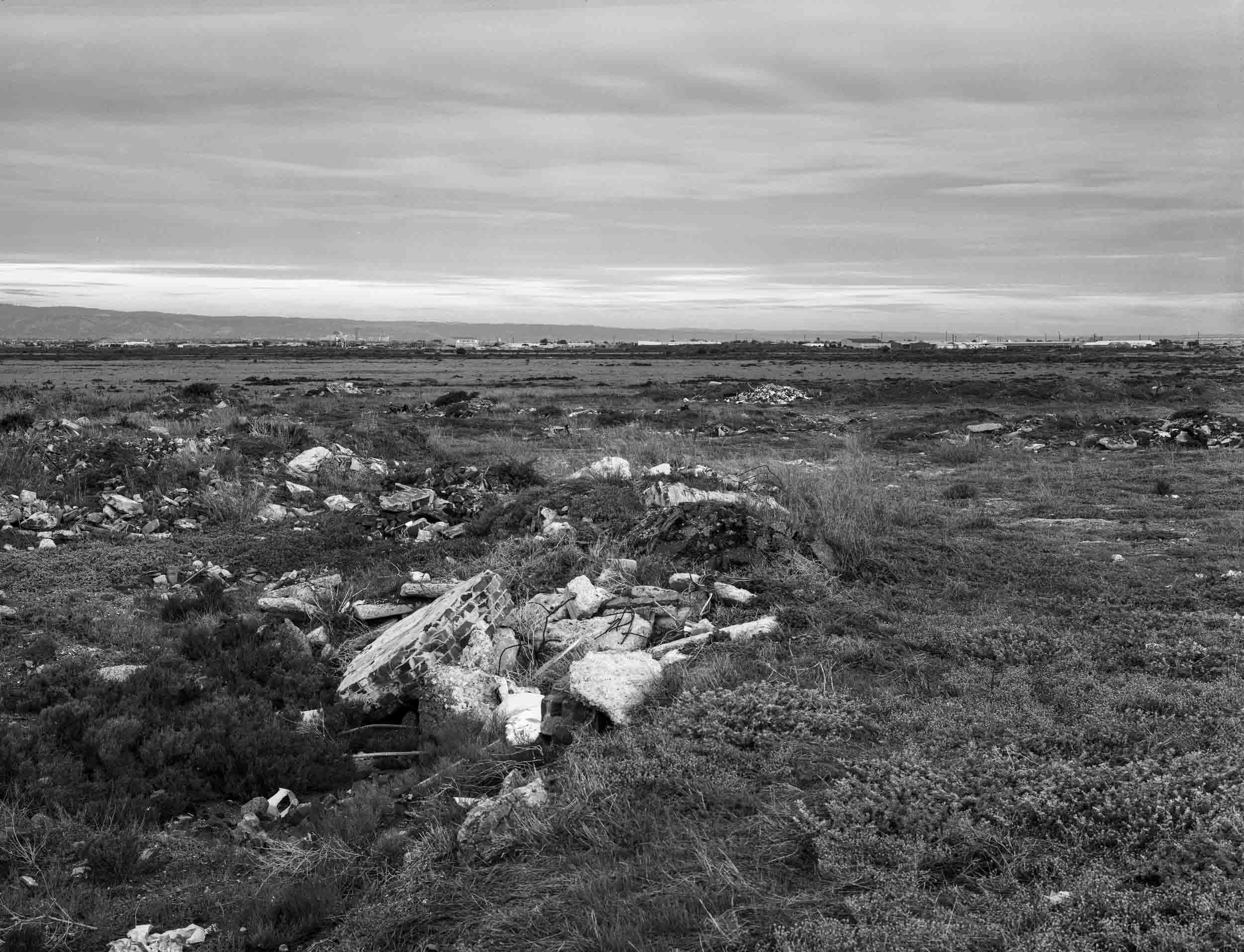Walking Port Adelaide
Edgelands
I remembered that I'd walked around more than Adelaide's car-centric CBD that has resulted from transport policy that has prioritised private motor vehicle travel and road freight transport. I had spent a lot of time walking the edgelands in, and around, the Port Adelaide precinct in the 1980s. The above example is from the archives. The picture was made on the Grand Trunkway near the Torrens Island power station. We are looking north east towards the Adelaide hills. What appeared to be wetlands was being used as, or had become, an industrial wasteland. It is a good example of edgelands in 1980s industrial Adelaide.
The picture below is near the eastern end of the Port River Estuary. The bridge for the railway from Adelaide to Port River is in the background. My photographic interest in the walking around the Port River estuary in the 1980s was topographics and edgelands. Topographics was not a popular approach to photography in Australia then, whilst edgelands was not a common subject matter for photographers in the 1980s. This type of photography was not culturally significant during both the modernist and the postmodernist decade whilst traditional documentary photography was held to be no longer credible.
Port River estuary
I recall that I would often park the car opposite the Torrens Island power station then walk along the Port River estuary carrying the large format camera until I came to a fence that marked the end of public space and the beginning of corporate private property. The standard poodles would come with me on this walking the Port River, as it was far more walkable than the CBD. Adelaide as a city was developed in the 20th century under a car-centric planning model.
These archival, analogue photos exemplify those accounts of photography that hold it is a retrospective medium, charged with looking back—with history, memory and nostalgia. Even though we are viewing an arrangement of pixels on a screen this archival photography offers a co-presence with the past ---what Roland Barthes in Camera Lucida termed ‘that- has-been’ tense of photography. A photograph records the time at which reflected light strikes the film, and is thus both an indexical trace of the object and a certified document of time itself.
wetlands
If modernism lingered on until the 1980s postmodernism had evaporated by 9/11. By then the culture of photography changed with digital technology. Photography was shaped by AI in the camera, post processed through machine learning, was defined as data and assembled by algorithms. The picture becomes a circulating networked image in social media. This is a long way from Barthe’s Camera Lucida.



